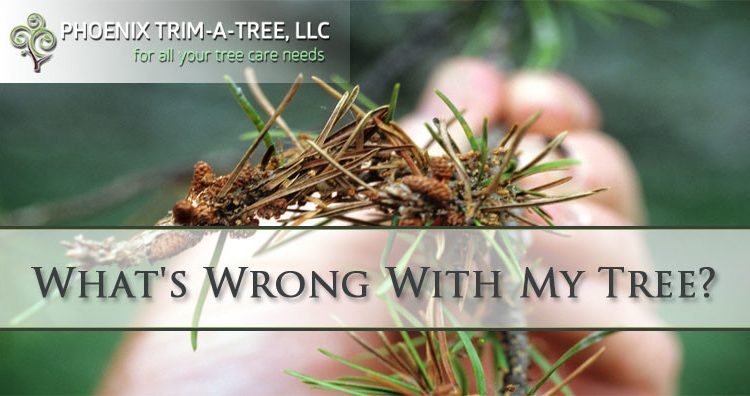What’s Wrong With My Tree?
WHAT’S WRONG WITH MY TREE?
GET A FREE ESTIMATE TODAY!
“What is wrong with my tree?” is one of the most highly asked questions by homeowners. Of course there is no one way we can answer this question for each and every individual. But, we can give you a strategy for observing your trees overall health to help you determine if it has a problem, and what you may be able to do to fix it. The life of a tree in poor health can often be if problems are caught soon enough. If you think the health of your tree is in question, we advise following a course of observation that examines the traits and attributes that indicate whether the tree is getting all of the necessities it needs, and whether it is being threatened by other, external forces.
THE TREE’S ENVIRONMENT
Your first step is to review the tree in questions overall health. What species of tree is it? How old is the tree? Is the area where you live compatible with the tree’s needs? What are the elements of the hardscape? Are sidewalks, curbs, decks, pools, or sprinkler systems close enough that they affect the trees health?
Because a little less than three quarters of urban tree deaths could be attributed to root damage, it’s very important to note if any disruption has been done. Even if the disruption was done over five or six years in the past, it may be a significant factor in the health of the tree’s root system. Some trees start dying almost immediately if they suffer root damage. While other trees, can take up to five or more years before showing the effects of root damage. Sometimes people often fail to associate the decline in a tree’s health with changes in its root system. The health of a trees root system cannot be emphasized enough.
VISUAL INDICATIONS TREE HEALTH
Once you find out the tree’s history and any changes in the hardscape noted, the tree can be inspected for clues to evaluate its overall health. Because so many threats start at the root crown, it is recommended look there first. Does the tree enter the ground at the same depth at which it was first planted? Is the root crown flare above ground and in fair condition? This area needs to be able to breathe, and if it is buried, it is vulnerable to intrusion by various insects, fungi, and microorganisms that flourish in moist, dark conditions.
As the inspection moves up the tree, the leaves are another way to evaluate the tree’s health. Leaves that are nice and healthy are bright, fresh, and hydrated. Leaves that curl indicate an insufficient supply of water, while leaves that are yellow indicate a lack of key nutrients. This is another factor that can be caused by root damage, or due to poor pruning.
When you follow this method of observation, you can assess the overall health of your trees, and identify the factors that are interrupting their health. Even if you can’t identify the causes of decline yourself, a certified arborist may be able to assist you in finding the source of the tree’s While no one person can answer “What’s wrong with my tree?” we can help you find answer the question yourself. The more knowledgeable about your trees, the healthier you can help them be.
PHOENIX AREA ARBORISTS
If you have a tree that is suffering it can be a risk to your person, property, and your family. While saving every tree possible is the overall goal of a certified arborist, any tree that is dangerously damaged should be cut down. Don’t wait for wind, weather, or time to bring the tree down on your home, your vehicle, or someone enjoying being outdoors. Give us a call today to get your tree cared for right at 480-962-0701.

